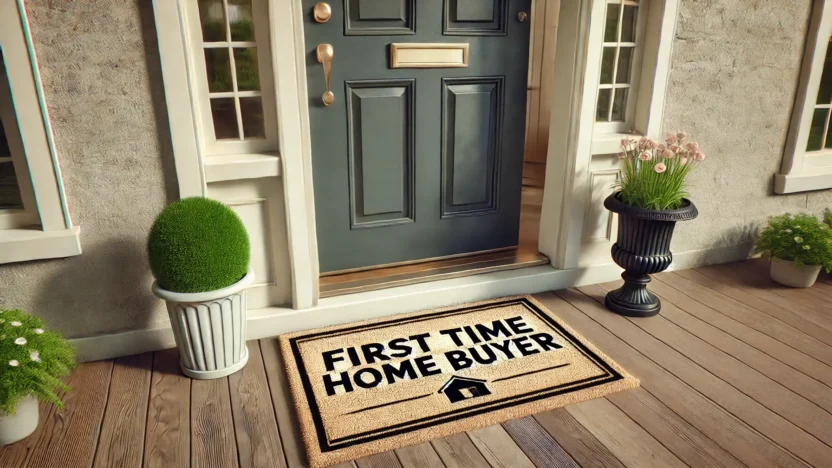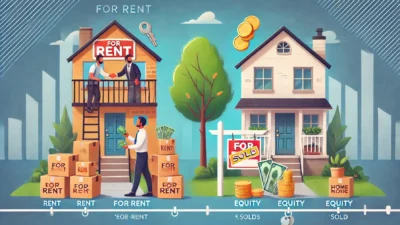Buying your first home is exciting, but with so many options, how do you know which home is right for you?
If you’re searching for a home in Ventura, Oxnard, Camarillo, Simi Valley, Thousand Oaks, or anywhere in Ventura County, it’s important to know what to prioritize—so you don’t end up with buyer’s remorse.
This guide will help you focus on what truly matters when choosing your first home, so you can make a smart investment that fits your lifestyle and future goals.
1. Must-Haves vs. Nice-to-Haves: What Really Matters?
It’s easy to fall in love with a home that looks stunning but doesn’t actually meet your needs. Before you start house hunting, make a list of:
Must-Haves (Non-Negotiables)
These are essential features based on your lifestyle, family size, and work situation. Without them, the home won’t work for you long-term.
- Location within a specific school district if you have or plan to have kids.
- At least three bedrooms if you need separate spaces for family members or a home office.
- Garage or dedicated parking if street parking is difficult or unsafe.
- Single-story home if accessibility or mobility is a concern.
- Backyard space if you have pets or want an outdoor area for gatherings.
- Commute-friendly location if you need to be within a certain distance from work or public transportation.
Nice-to-Haves (Preferences, But Not Deal Breakers)
These are features that would be great to have but aren’t essential.
- A large walk-in closet in the primary bedroom.
- An updated kitchen with quartz countertops and new appliances.
- A swimming pool (great for entertaining but comes with maintenance costs).
- Hardwood floors instead of carpet (carpet can always be replaced later).
- Smart home features like a Ring doorbell, Nest thermostat, or pre-installed security system.
Pro Tip: Some nice-to-haves can be added later, so don’t rule out a great home just because it lacks a feature that can be upgraded over time.
👉 Related: First-Time Home Buyer Mistakes to Avoid
2. Location Matters More Than You Think
A home’s location impacts your lifestyle and long-term resale value. You can remodel the interior, but you can’t move the house once you buy it.
Key Factors to Consider:
- Commute Time – How far is the home from work, school, or family?
- Neighborhood Safety – Check crime rates and walkability scores.
- Nearby Amenities – Are grocery stores, parks, and restaurants close by?
- Future Development – Is the area growing? A home in an up-and-coming neighborhood can appreciate in value.
- HOA Fees & Rules – Some neighborhoods have homeowner associations (HOAs) with monthly fees and restrictions.
Example: You find a beautiful, affordable home in Port Hueneme, but your job is in Thousand Oaks. The hour-long commute each way could quickly become frustrating. In this case, location outweighs the home’s features.
3. Home Layout & Floor Plan: What Works for You?
A home’s layout is just as important as its size. You might find a 2,500 sq. ft. home, but if the space isn’t used well, it won’t feel functional.
What to Consider in a Layout:
- Open-Concept vs. Traditional Floor Plans – Do you prefer an open kitchen and living space for entertaining, or separate rooms for more privacy?
- Bedroom Placement – If you work late, having the primary bedroom far from other rooms might be ideal. Families with young kids often prefer bedrooms close together.
- Bathroom Count – Homes with at least two full bathrooms are more convenient, especially for families.
- Kitchen Size & Layout – Do you cook often? A small galley kitchen may feel cramped, while a larger kitchen with an island provides more space.
- Storage Space – Is there a pantry, attic, or enough closet space for your needs?
Example: If you plan to host friends and family, an open-concept living space with a large kitchen makes sense. But if you work from home, having a quiet, dedicated office space is likely more important than an open layout.
4. Look Beyond the Staging & Décor
Sellers use professional staging to make homes look more appealing, but don’t let furniture and decorations distract you from potential issues.
What to Focus On Instead:
- Signs of Damage – Look for water stains, cracks in walls, or sagging ceilings.
- Windows & Doors – Check for drafts, sticking doors, or poor insulation.
- Natural Lighting – Some homes feel dark even during the day due to poor window placement.
- Noise Levels – Visit at different times to see if there’s loud traffic or noisy neighbors.
- Closet & Storage Space – Imagine where you’d store everyday items, not just how the space looks when empty.
5. Consider Resale Value
Even if this is your first home, it likely won’t be your forever home. A house with good resale value will be easier to sell when you’re ready to upgrade.
What Adds Resale Value?
- Homes in top-rated school districts hold value, even if you don’t have kids.
- A functional, neutral floor plan is easier to sell than a home with highly personalized features.
- Updated kitchens and bathrooms tend to attract more buyers in the future.
Example: A home with four bedrooms instead of three may appeal to a wider range of buyers later, making it a better long-term investment.
6. Don’t Skip the Home Inspection
No matter how much you love a home, an inspection can reveal costly hidden issues.
Major Areas to Inspect:
- Roof & Foundation – Expensive to repair if there are cracks or leaks.
- Plumbing & Electrical – Older homes may have outdated systems that need costly upgrades.
- HVAC System – Check the age and condition of the heating and cooling systems.
If issues come up, you may be able to negotiate with the seller to cover repairs.
👉 Related: The Hidden Costs of Buying a Home
Find Your First Home in Ventura County
If you’re ready to buy your first home in Ventura, Oxnard, Camarillo, Simi Valley, or Thousand Oaks, I can help you find a home that fits your needs and budget.
Reach out today to start your home search and get pre-approved!
[IDX: Browse First-Time Buyer Homes in Ventura County]



